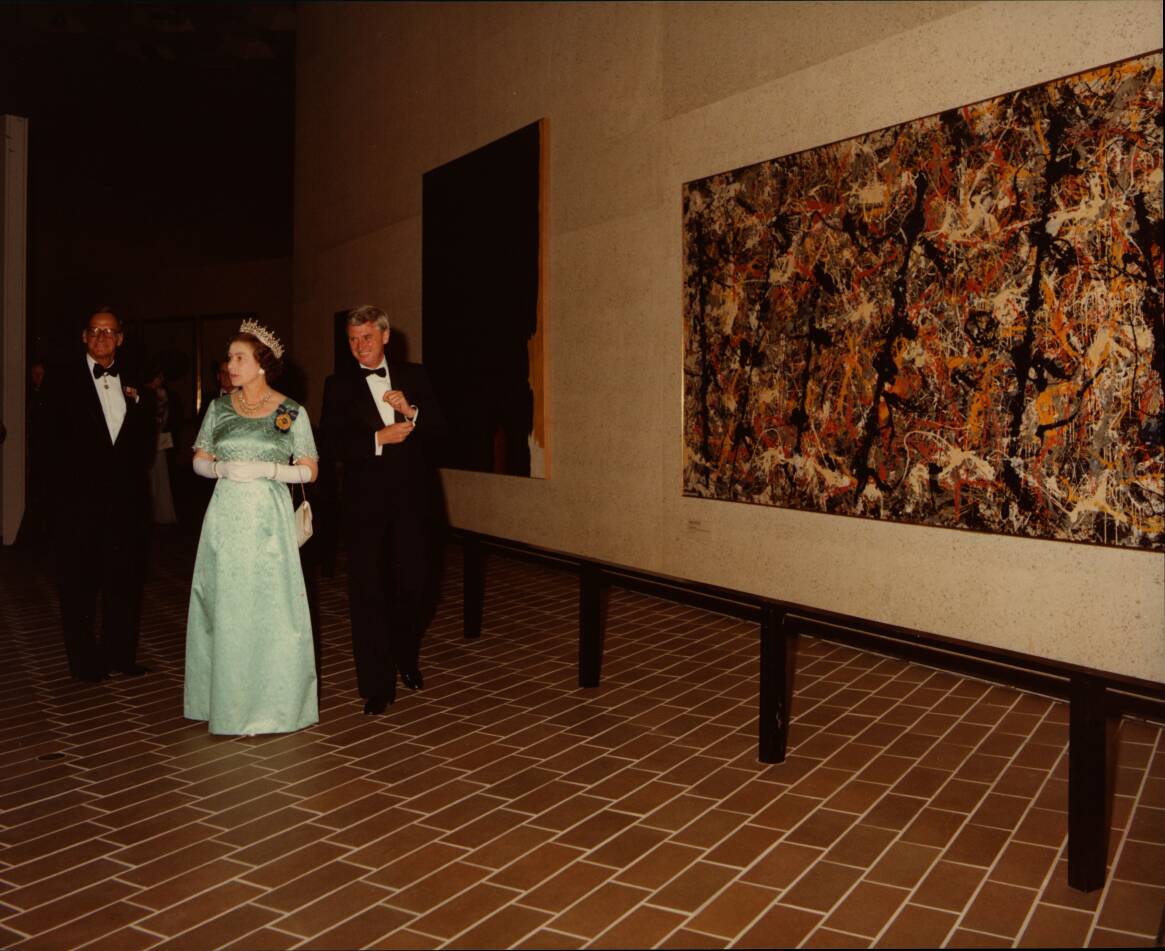
On a fine Canberra evening, on October 12, 1982, Queen Elizabeth and her husband Prince Phillip were among the first people to visit the newly opened National Gallery of Australia. They were so impressed the night fell well behind schedule - and it was being broadcast live - their tour alongside then director James Mollison and chairman Gordon Darling took in the international and primitive art displays and they spent a good amount of time in front of the controversial Blue Poles.
"I have seen a country moving confidently into the future," she said in her speech, "secure in the knowledge that a people rich with talent and full of enterprise and industry, together with a land abundant in resources, form an unstoppable combination ... Nothing could better demonstrate the enhanced standing of Australia than this fine National Gallery."
The Queen was fond, in the 14 visits she made to Canberra over the years, of visiting our national institutions, and now they are doing their part to commemorate her passing.
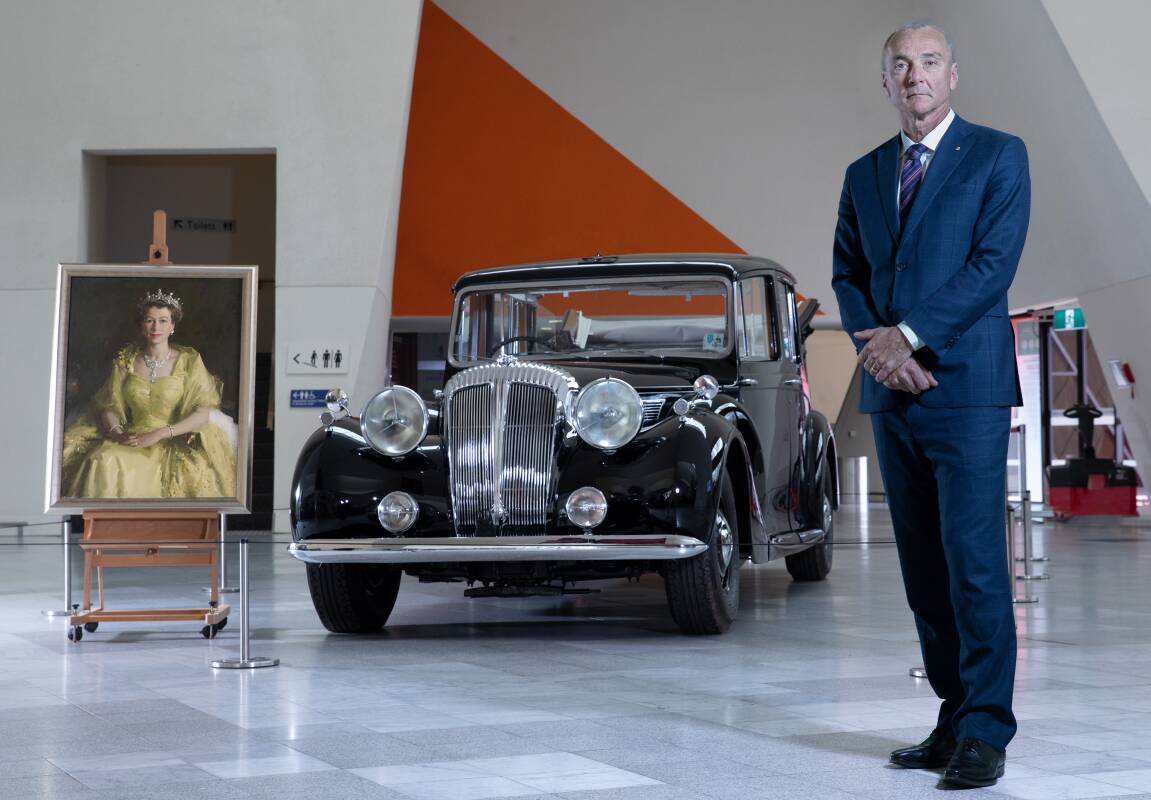
At the National Museum, which she visited in 2000, a 1948 Daimler landaulette which she used during the 1954 tour has gone on display. At almost six metres long and weighing four tonnes, it was one of several cars ordered for the 58-day tour.
Museum director Mathew Trinca said it was time to reflect on her seven decades as sovereign.
"We are grateful for her commitment to duty and her extraordinary lifetime of service," he said.
The famous William Dargie wattle painting is also on display and there's an online remembrance page where people can record their memories of the Queen. The museum's home page has also been updated to pay homage to her royal highness with photographs and articles.
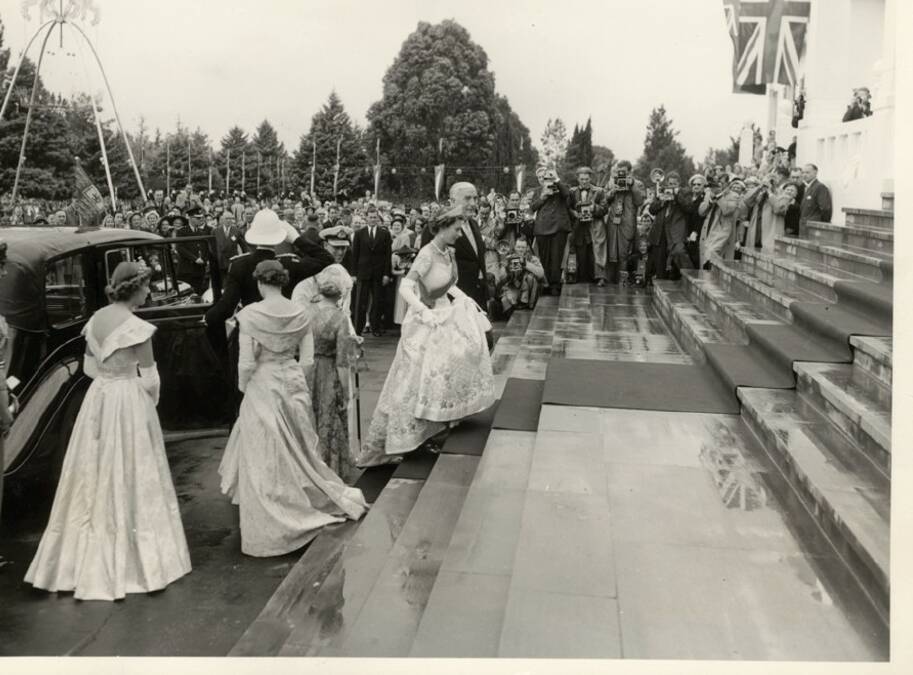
At the Museum of Democracy, in Old Parliament House, acting director Andrew Harper was reflecting on the nine occasions she'd visited the building, from 1954 to the last visit in 1986.
"On three occasions, the Queen opened parliament from the Senate Chamber," Harper said.
"It would always be packed. Members of the House of Representatives would cross King's Hall to squeeze into the Senate Chamber, sharing bench seats with the Senators. The public and press galleries would also be packed solid with many craning over to catch a good view of the Queen.'
There is an exhibition, Happy and Glorious, which is a tribute to the Queen's 1954 visit for the opening of the 20th parliament.
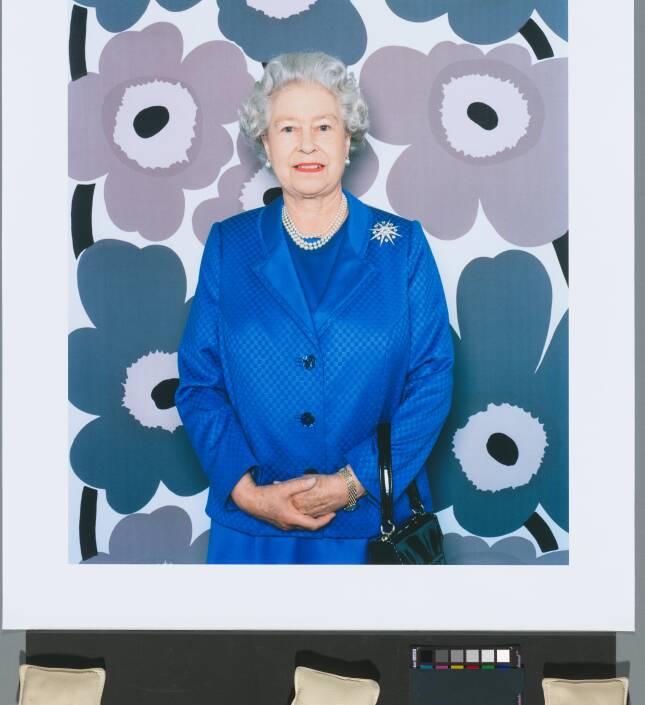
At the National Portrait Gallery, Polly Borland's striking photograph from 2001 is on display.
Melbourne-born Borland was one of few photographers commissioned to take a portrait for Her Majesty's Golden Jubilee in 2002. She was allowed five minutes for the shoot, which was to start as soon as the Queen was in front of the camera.
"'All of a sudden, I see this woman, who's a lot more petite than I'd imagined, a lot more beautiful than I'd imagined, a lot richer than I'd imagined," Borland says.
"'I couldn't talk, I couldn't remember anything."
Nevertheless, Borland shot two rolls of film in three minutes, resulting in two portraits. Both are now iconic for their witty, contemporary aesthetic, although the artist still thinks "it's a miracle I got two good photos".
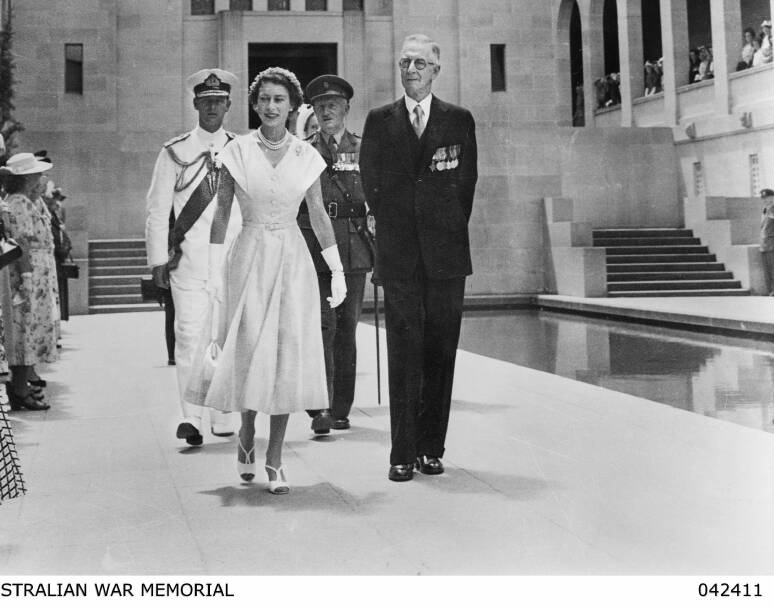
At the War Memorial, director Matt Anderson said he was deeply saddened to wake to the news.
"We were honoured to welcome her to the Australian War Memorial on numerous occasions," he said.
"During these visits the Queen laid wreaths, toured our galleries, met with Australian Victoria Cross recipients and greeted the crowds of visitors who gathered here to catch a glimpse of her.
"She attended Anzac Day at the Australian War Memorial in 1970, accompanied by Prince Phillip and Princess Anne."
The memorial has compiled an online hub in tribute to the Queen.
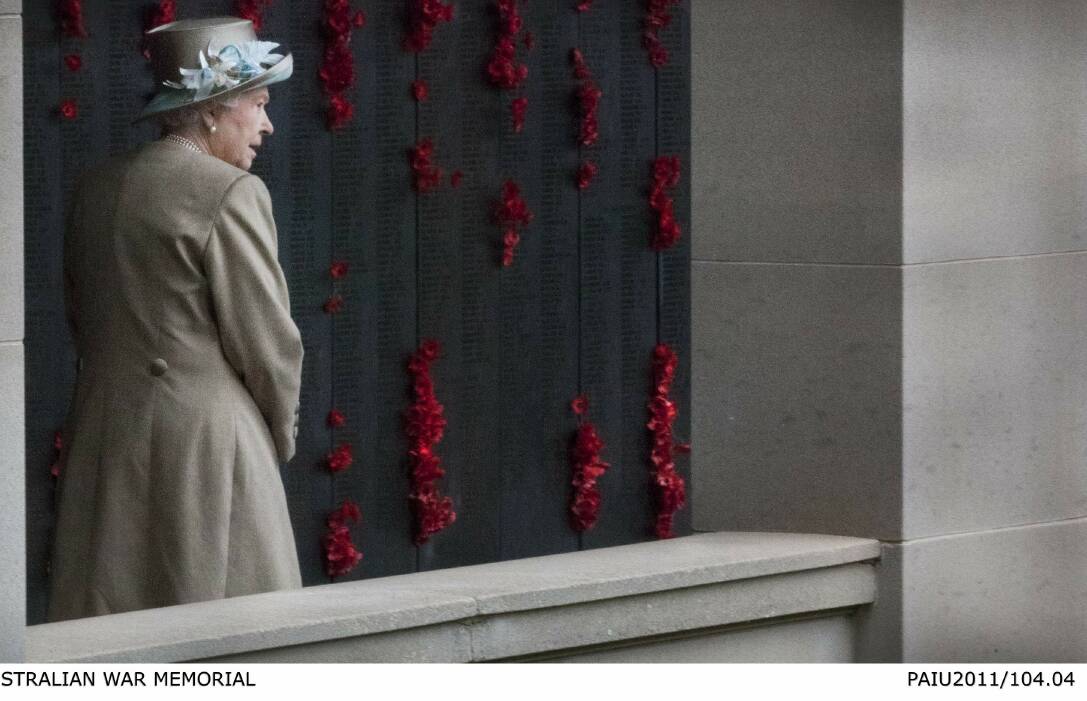
We've made it a whole lot easier for you to have your say. Our new comment platform requires only one log-in to access articles and to join the discussion on The Canberra Times website. Find out how to register so you can enjoy civil, friendly and engaging discussions. See our moderation policy here.







